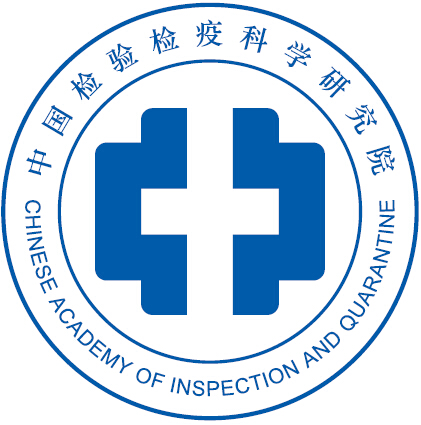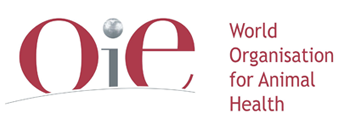Project description
China has faced epidemics caused by the H5N1 and other influenza virus subtypes such as the recently emerged H7N9 LPAI, which have an acknowledged avian origin and clear human health implications. Avian influenza and other emerging avian diseases are also a risk for the poultry production of neighbouring and trading partner countries. The consequences on human and animal health and welfare are well known as well as their related heavy economical losses. When the virus is introduced and spreads there can be disruption of commercial exchanges between Countries leading to the ban on commercial trade of live birds and poultry products.
In recent years, the Chinese poultry production capacity has increased to 11 billion birds per year including almost 7 million poultry for the Hong Kong and Macao markets. It should be mentioned that the importation of poultry and poultry products in these countries is subjected to restriction, with economical consequences for both the importing and the exporting countries and regions. When the hugely extended territory of China faces such a complex epidemiological situation, commercial exchanges of healthy poultry and safe poultry products can be assured by good surveillance and control procedures which combine veterinary surveillance with territorial management by means of Geographical Information Systems (GIS) technologies. GIS can be beneficial to veterinary organisations by providing a means to map their own data and also a graphic communication platform accessible to other organisations, donors, government ministries, and the populations thus improving the overall efficiency, effectiveness and the transparency of veterinary governance.
In order to achieve the above, it is necessary to integrate well-designed GIS framework into the organisational workflow of veterinary data management system. A system that integrate GIS data, with epidemiology and surveillance data, can hide complexity from users, minimise mistakes and enhances the transparency through inter-application operability, communication and cooperation. All these are essential issues trade exchanges certified by surveillance programs. When this strategy is applied to avian diseases it can guarantee effective surveillance and control also in a huge territory like China and can restore trust in traders and provide guarantees to the food safety agencies of importing countries. The Chinese veterinary services could benefit of training and guidance in order to properly use GIS techniques applied to surveillance, control, zoning for analysing epidemics forecasting their potential spread. GIS is the appropriate tool for improving effectiveness and transparency of surveillance, control and zoning and for certifying disease status.
The Project is designed to make available the CC expertise to the candidate laboratory by establishing an appropriate close working relationship in a real collaborative spirit. The staff of the Candidate Institute will take part in the Parent Collaborating Centre’s activities and learn how to implement epidemiological spatial analyses and manage GIS tools and frameworks applied to surveillance, control and zoning activities of Avian Influenza and other emerging avian diseases in China. With the expertise acquired the Candidate Institute will be able to provide advice and technical assistance to other Chinese and Asian Institutes in the Region.
Overall Project plan
Parent Institute:
OIE Collaborating Centre for Epidemiology, Training and Control of Emerging Avian Diseases at the Istituto Zooprofilattico Sperimentale delle Venezie (IZSVe), Viale dell’Università 10, 35020 Legnaro (PD), Italy
Candidate Institute:
Chinese Academy of Inspection and Quarantine (CAIQ), affiliated to the General Administration of Quality Supervision, Inspection and Quarantine of the People’s Republic of China (AQSIQ)
Disease addressed by the cooperation project:
Avian influenza and other emerging avian diseases
Length of project and main activities:
The project lasts 36 months starting from 24/11/2014 The main activities are capacity development on i) the applied principles for building an animal identification and traceability infrastructure, ii) the epidemiological methods for analysing its related animal disease datasets and iii) the Geographic Information System (GIS) management tools to design operationalize control and zoning of emerging avian diseases.
Objectives
- The Candidate Institute will acquire the capacity to design and introduce GIS tools for surveillance, control and zoning increasing both the effectiveness of epidemic controls and the certification of products of animal origin for trade, based on the OIE standards.
- The Candidate Institute will acquire expertise to organize basic GIS training on surveillance, disease control and zoning procedures.
- The Candidate Institute will acquire the practical principles for building the animal identification and traceability infrastructure enabling the possible establishment of a national reference center with the mandate of maintaining the expertise, guiding other GIS surveillance and zoning activities in China and in the Region.
Project activities
The Collaborating Centre is the project manager and holds the managerial functions and is responsible for the project implementation and monitoring. The project leader will be Dr Stefano Marangon and the project coordinator will be Dr Nicola Ferrè. Several staff will be involved in the project at the Parent Collaborating Centre and it will be supported by the IZSVE office for international cooperation.
In line with the objectives stated in paragraph 2.3 the cooperation is designed to maximise capacity building. This is achieved through the following phases:
- Phase 0
Cooperation project inception for project presentation and agreement on agendas - Phase 1
In depth assessments for preparing the ground for building practical capacity:- review of the relevant updated bibliography on GIS organisational workflow, spatial and spatial-temporal analysis applied to animal surveillance, as well as of the OIE standards and guidelines related to zoning;
- baseline assessment of the CAIQ focusing on actual organisation, competencies and needs for improving their territorial disease control capacity;
- assessment of the currently available base of spatial data and the Chinese legal framework which regulates their use.
- Phase 2
Capacity building and knowledge transfer on epidemiological methods, GIS and spatial analysis techniques implemented through: (i) training of key people who will be depositary of knowledge and will train others (training of trainers), (ii) on the job training activities at IZSVe (iii) tutoring on zoning methods provided by the Parent institute at CAIQ and follow up in remote condition. - Phase 3
Post training assessment.



